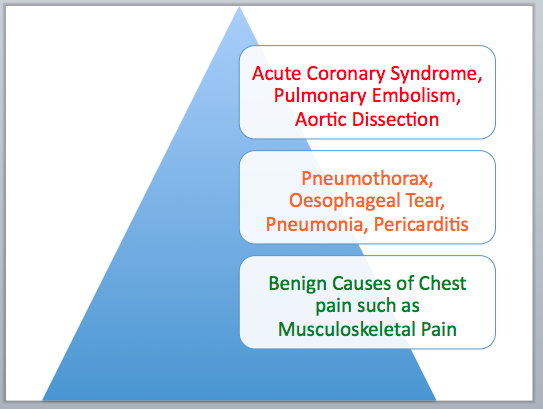Chest Pain – A Perilous Presentation?
When a patient presents to the Emergency Department (ED) the priority is to consider ‘life-threatening’ conditions. Chest pain is given a high triage ‘urgency’ because Acute Coronary Syndrome (ACS), Pulmonary Embolism and Aortic Dissection can all present with chest pain and are time-dependent life-threatening diagnoses.
Common and Life-threatening Causes of Chest Pain

While these 3 conditions are the first considerations, at the back of our minds we also often think of Pneumothorax, Boerhaave Syndrome, Pericarditis and Pneumonia – which can all present with chest pain. However, it is really ‘ACS‘ that we want to consider in the first couple of minutes of the patient’s arrival – this is the rationale for performing and reviewing a 12 lead ECG in the first instance.
The ECG is often shown to the treating doctor quickly to avoid ‘missing ACS‘. What do we look for other than the classic ‘tombstone’ ST elevation?

It is unlikely we would miss this type of ECG… The question is what should we look for on the 12 lead ECG other than obvious ST segment elevation? A recent article by Macias et al outlines some of the “Myocardial Infarction” Equivalents:

Examples of ‘MI Equivalents’
- WELLEN’S SYNDROME
- DE WINTER T WAVES
- LEFT MAIN (ST ELEVATION IN AVR)
- POSTERIOR MI
- DIAGONAL BRANCH OF LAD
- SGARBOSSA CRITERIA (LBBB AND PACEMAKER)
Macias et al summarise the ECG changes to look for as follows:
